Beijing's Forbidden City - continued
Continuing on, a look at the courtyard on the west side of the Hall of Supreme Harmony
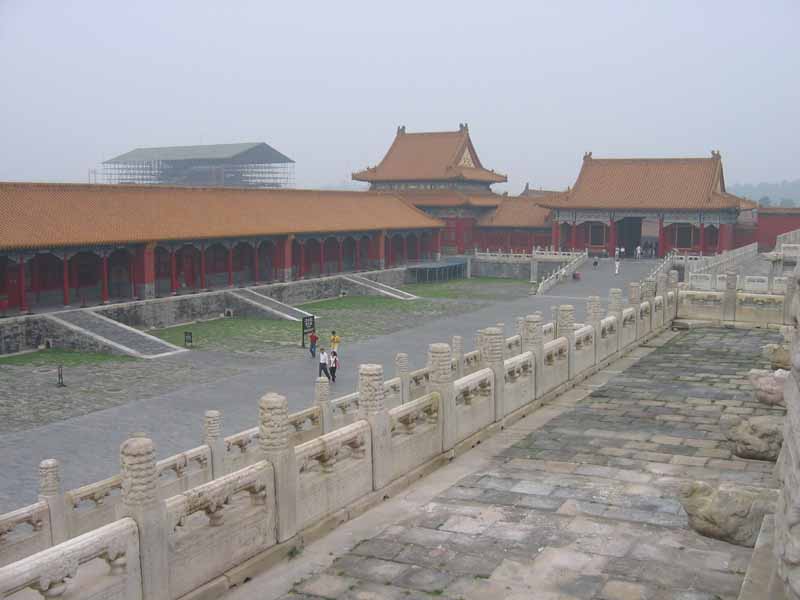
and more of the roof details.
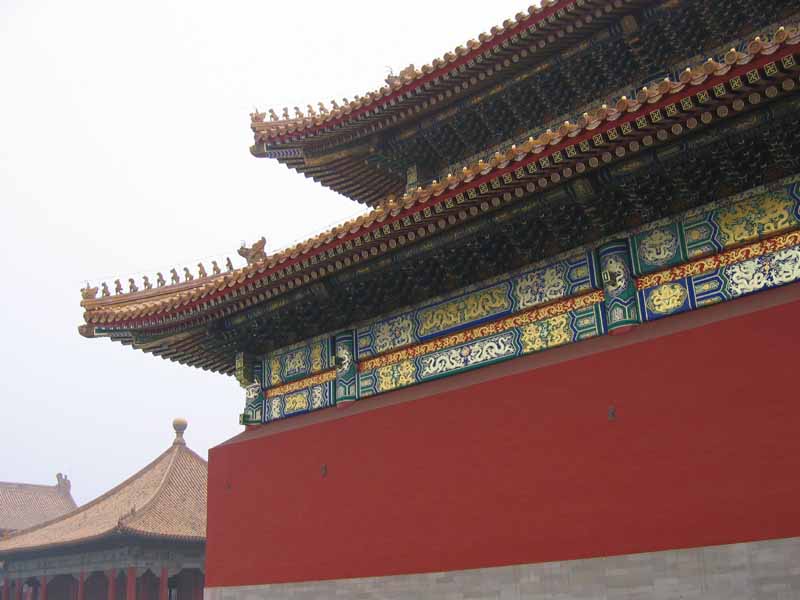
Next is the Hall of Central Harmony, a much smaller building which served as a place for the Emperor to prepare and rest before and during ceremonies.
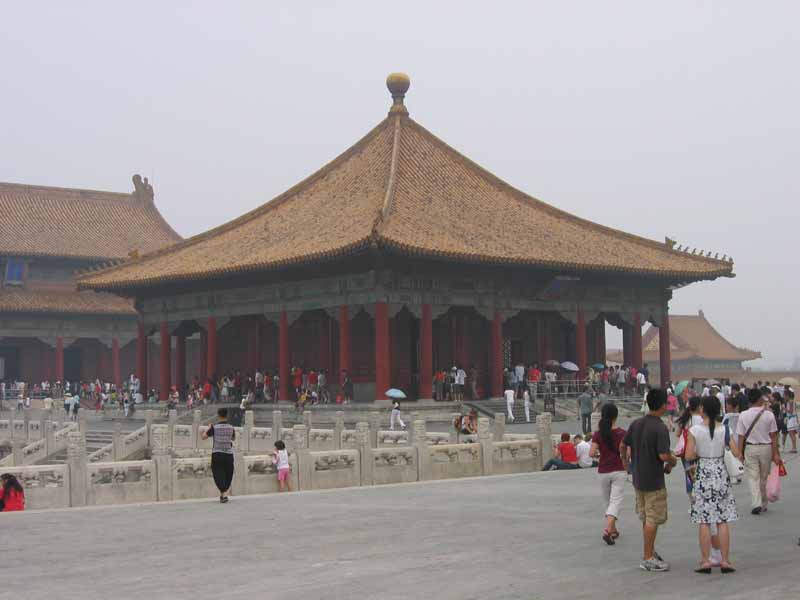
This Hall had it's own throne, but like others here, is off-limits to visitors, who can only look in from the outside.
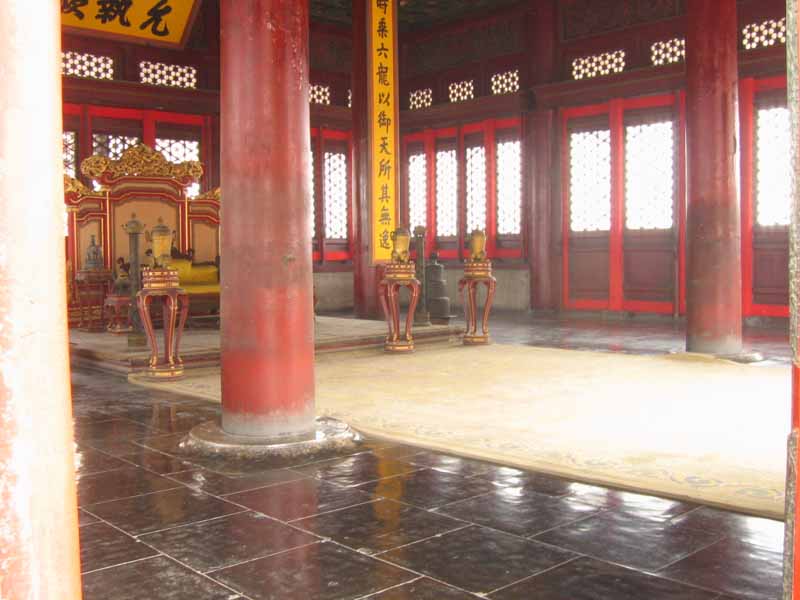
Detail here is of one of the columns of the hall. You can see that this dragon has been touched by many hands.
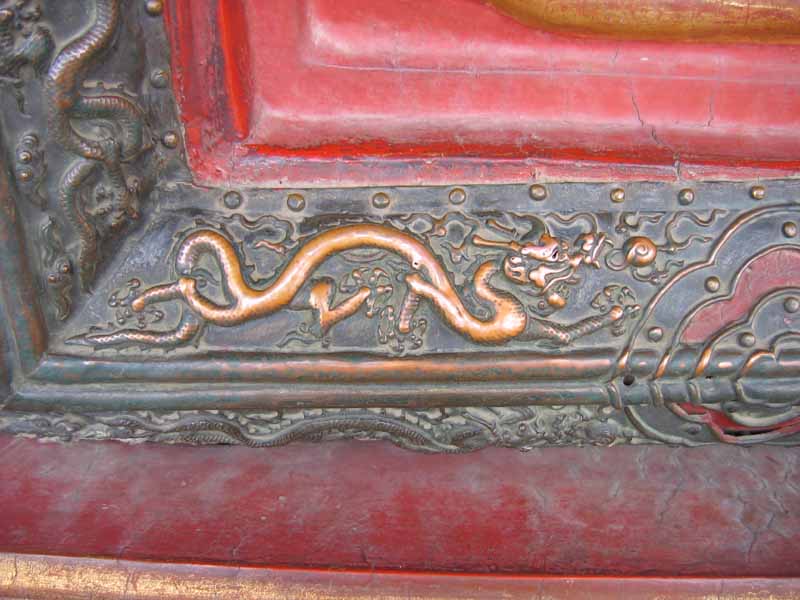
Ahead is the Hall of Preserving Harmony, described as being built for rehearsing ceremonies.
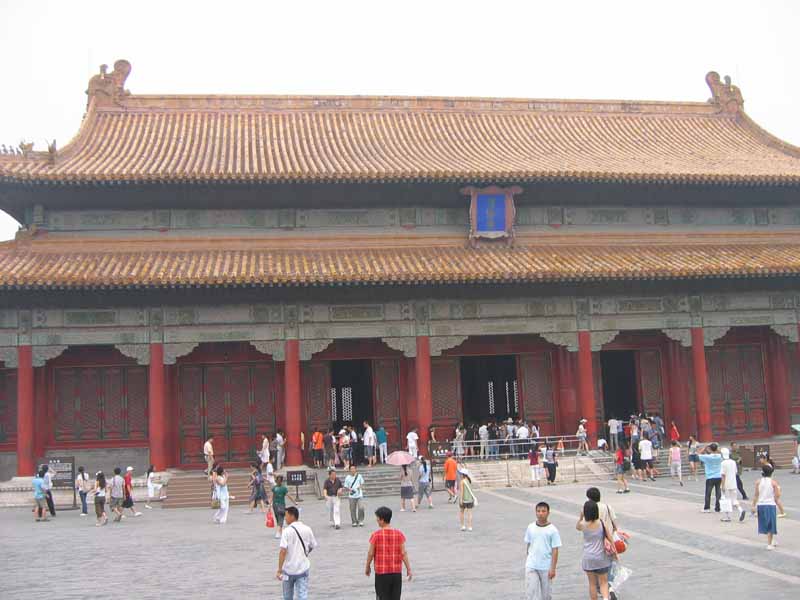
Of course, it has its own throne.
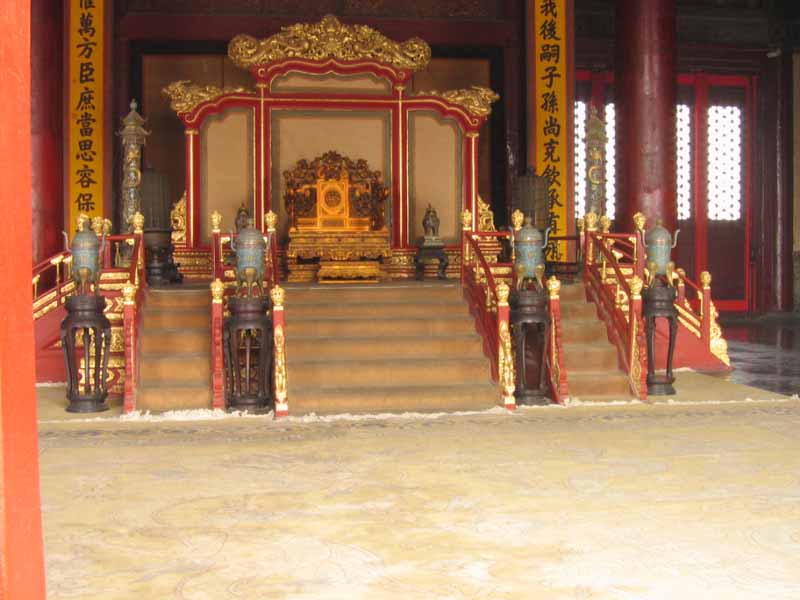
The northern ramp extending from the terrace of the Hall of Preserving Harmony consists of a bas relief carving, made on a single piece of stone 16-1/2 meters long, 3.1 meters across and 1.7 meters thick, the largest such carving in China. It weighs 200 tons.
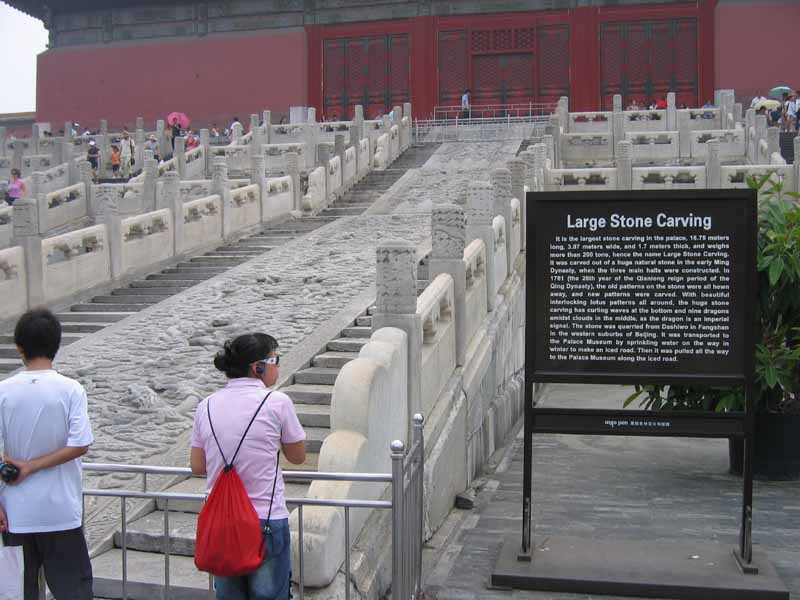
According to the marker, it was placed here when the Palace was built, but later re-carved in 1761 during the Qing dynasty with new patterns. The rock was quarried in the western suburbs and transported here by sprinkling water on the road in winter, creating an ice road. The carvings show waves at the bottom, and nine dragons amidst the clouds in the middle.
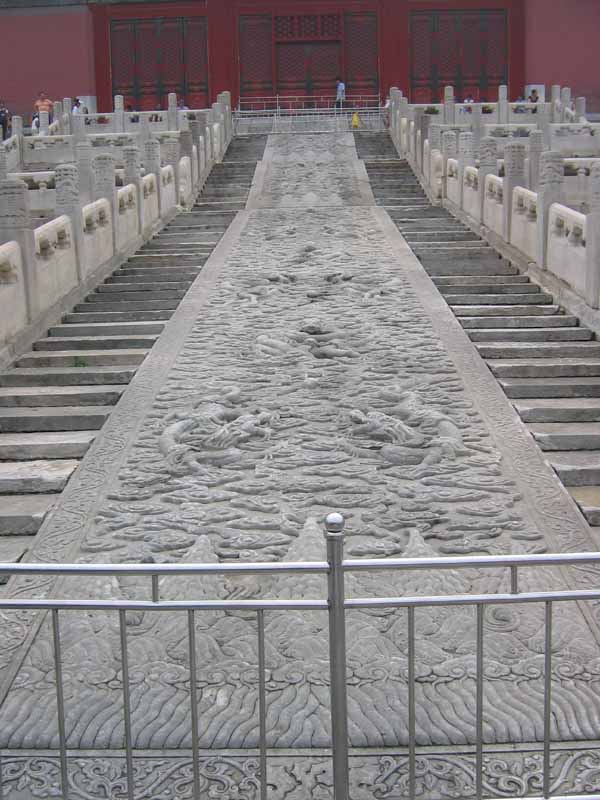
Beyond the Baohe dian, of Hall of Preserving Harmony, is another courtyard, and the Gate of Heavenly Purity, leading to the Inner Court. So far, we've been in the Outer Court. Standing guard leading up to the gate are these two bronze lions. (BTW, there are no real lions in China) Can you tell which lion is the male, and which is the female?
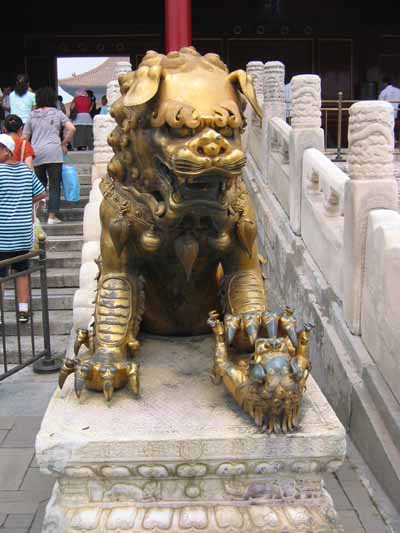 The female lion plays with a baby under its left paw.
The female lion plays with a baby under its left paw.
The male has his right paw on a ball, symbolizing his power over the world.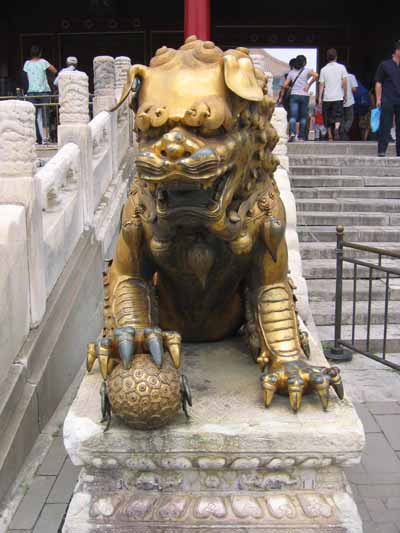
So to answer the question from the previous page, I was standing next to the male lion. Anyway, here's the Qianqing men gate, or the Gate of Heavenly Purity, and another set of those doors with the 9x9 door nails. (9=important number in China; red=wealth)
Beyond this gate is the Inner Court of the Forbidden City.
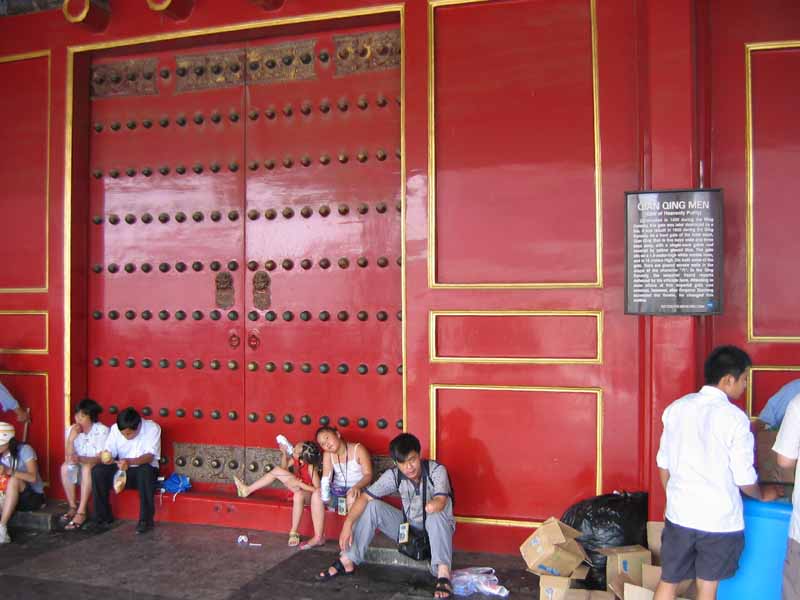
Here's our guide, Dina, telling us about the Inner Court. That's the Palace of Heavenly Purity behind her.
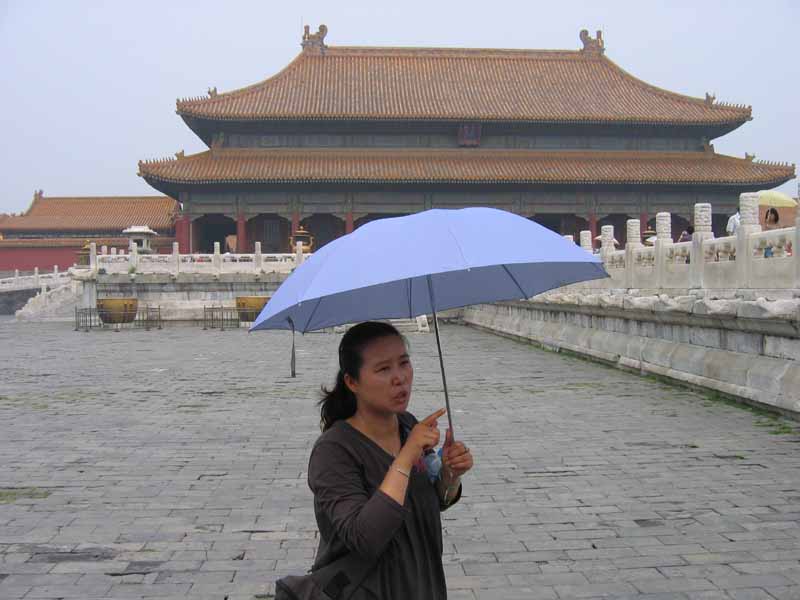
Another picture of the Palace of Heavenly Purity. During the Ming Dynasty, it was the Emperor's residence. It sits on a white marble platform. Can you see the incense burners & the water pots?
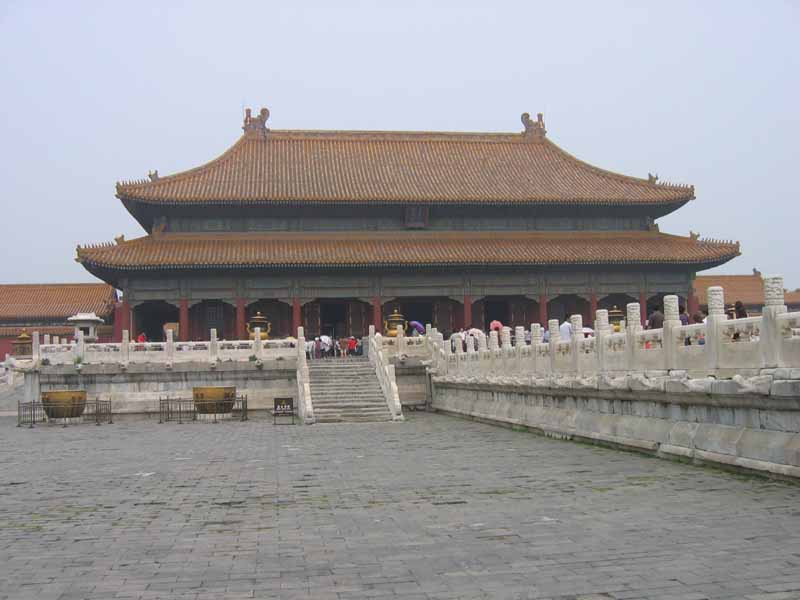
The walkway to the right is elevated above this courtyard by several feet, and these dragon heads adorn it. There's a hole in the mouth of each dragon, and I'm thinking that when it rains (does it ever rain here?) water spits out of the dragons' mouths. Of course I could be wrong.
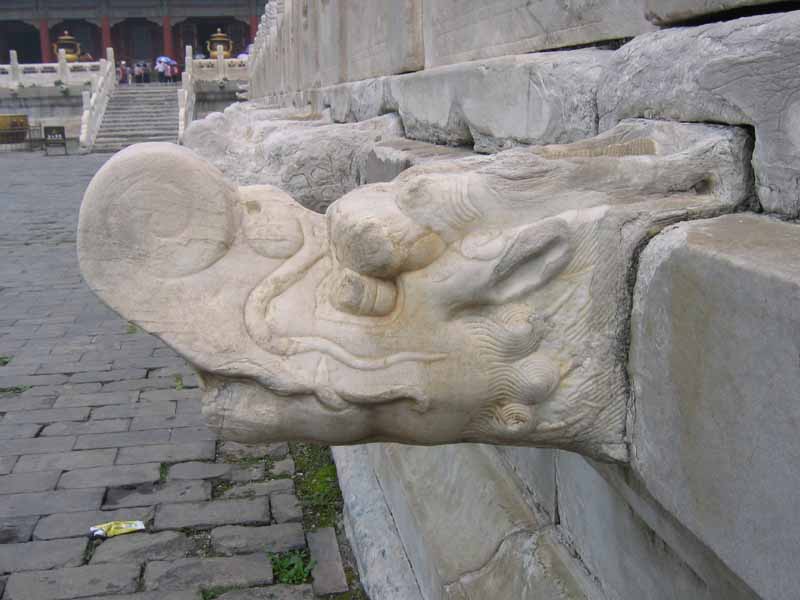
On the terrace around the Qianqing gong, the Palace of Heavenly Purity, are several of these bronze storks and turtles. The turtle is supposed to a son of the dragon.
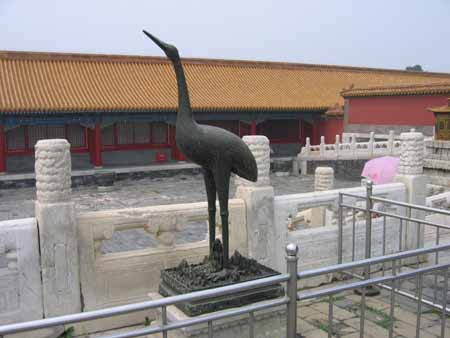
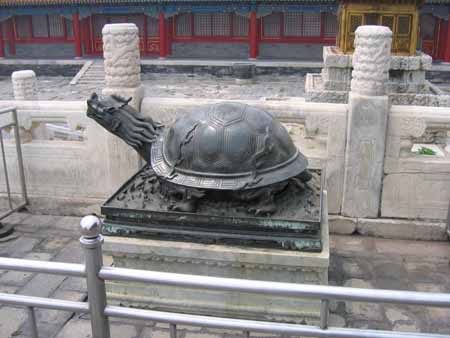
This is the throne room in the Palace of Heavenly Purity.
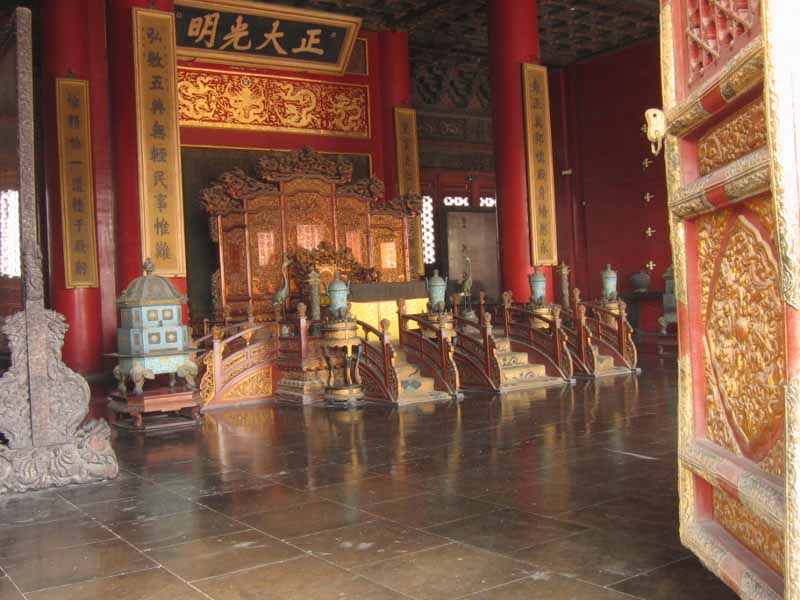
Below, people are looking into the next building in the Inner Court, the Hall of Union & Peace, or Jiao tai dian. Yep, there's a throne in here, too, as well as an ancient water clock, but it was too dark for a picture. This small building was where the Empress' birthday was celebrated during the Qing dynasty.
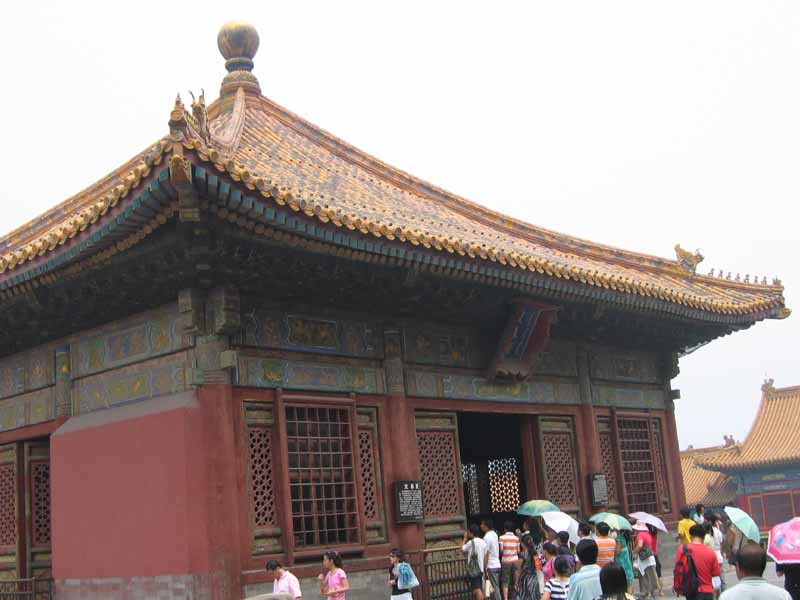
The last building here is the Kunning gong, or Palace of Earthly Tranquility, which was the Empress' residence during the Ming dynasty. It's a double-eaved building set very close to the Hall of Union & Peace, so close that I couldn't picture all of it, so this is a look at one of its corners and the surrounding courtyard. Behind it is the Gate of Heavenly Unity, which leads to the Imperial Garden.
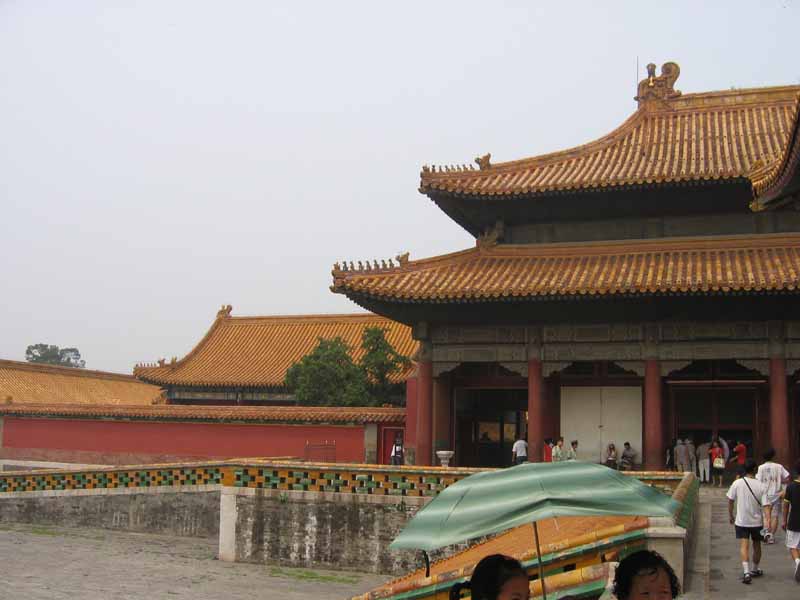
The Imperial Garden is on the north end of the Forbidden City. As you enter there's an unusual pair of trees that entwined themselves over the years. it's supposed to be good luck for newlyweds to have their picture taken by these trees. You can see it in the center of the photo below.
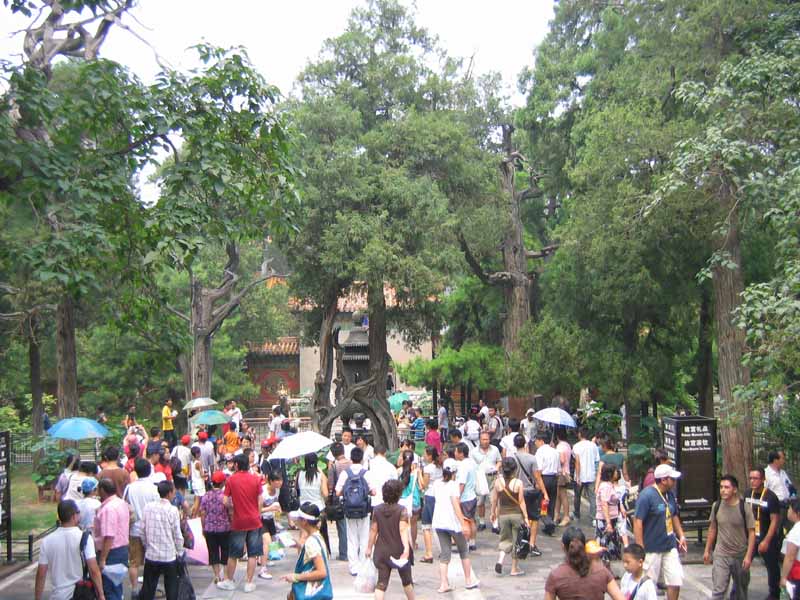
The Garden covers an area 130 x 90 meters, and contains many hundred-year old cypresses, pines, and wysterias. Empresses, emperors & their concubines came here to enjoy the scenery. Not to mention this REALLY big incense burner,
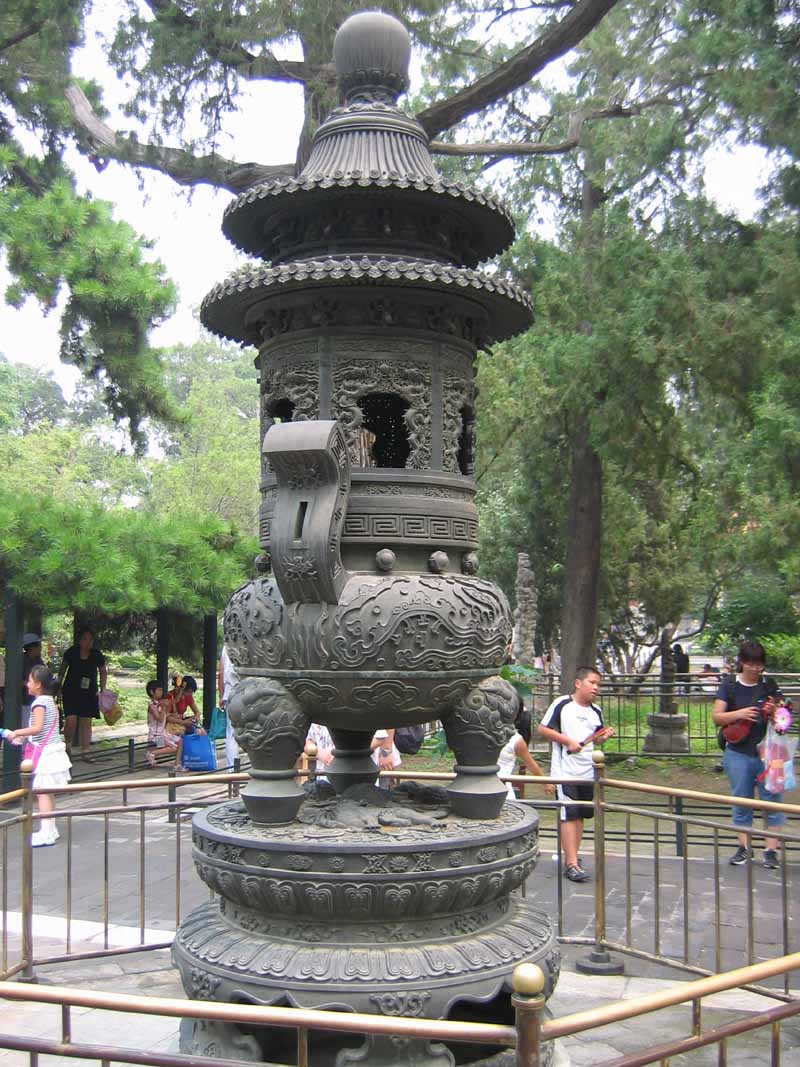
exotic rocks,
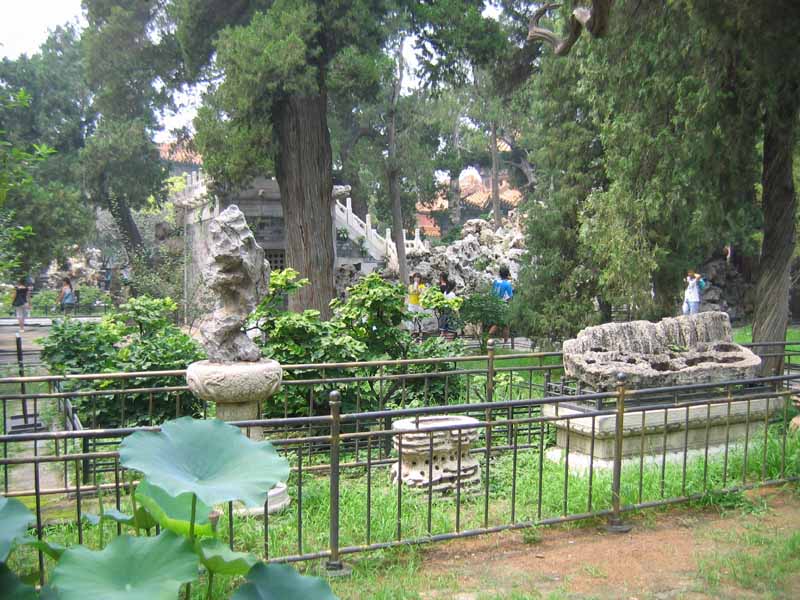
buildings,
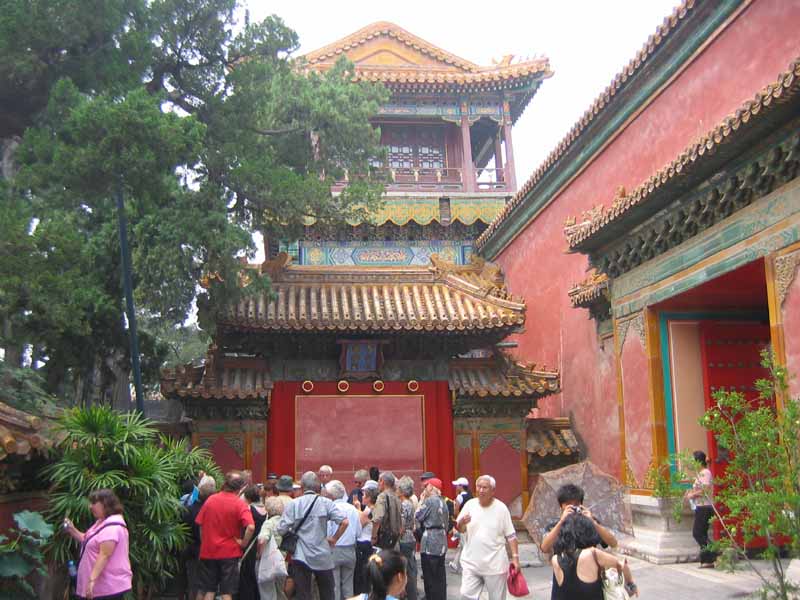
stone walkways,
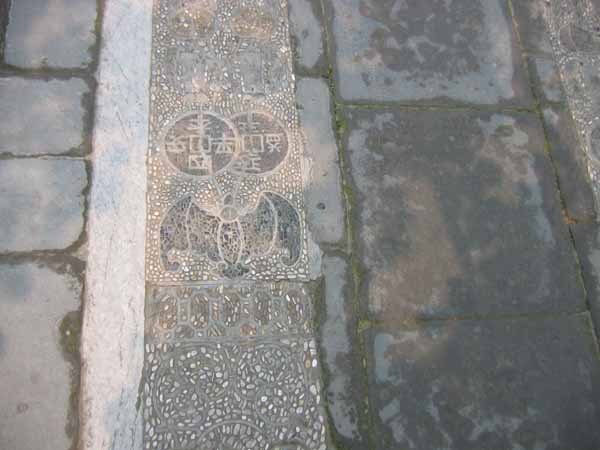
animals,
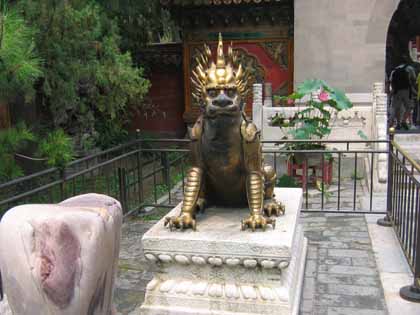
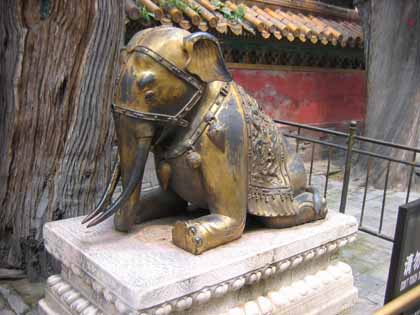
(remember, no REAL lions in China, but there are real elephants)
and just plain bizzare stuff, like this mass of volcanic rock, which is held together with sticky rice & eggs. I'm not kidding. It contains many carvings, and due to the irregular shapes, collects water in places, so has plants growing out of it.
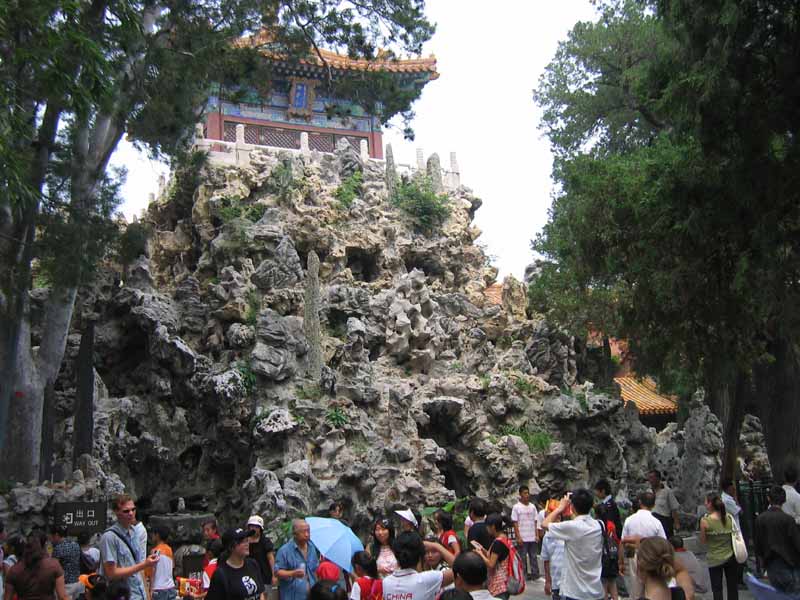
We exited the Imperial Garden & Forbidden City, crossing the moat
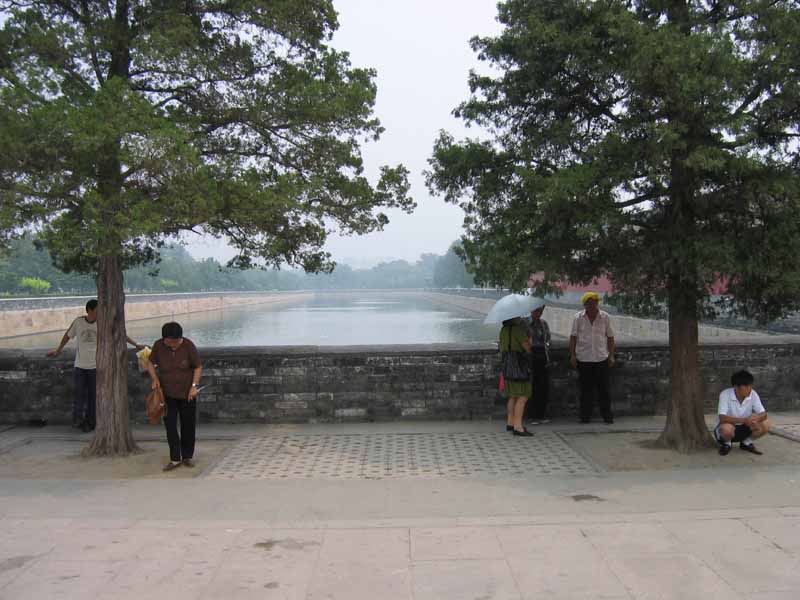
after exiting the Gate of Divine Prowess, or Shunzhen men.
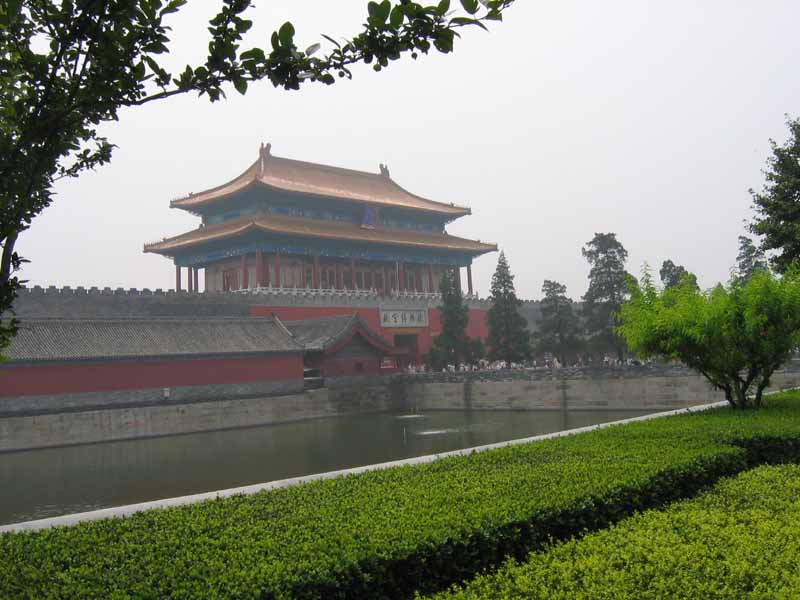
Across the moat, that's the northeast corner tower.
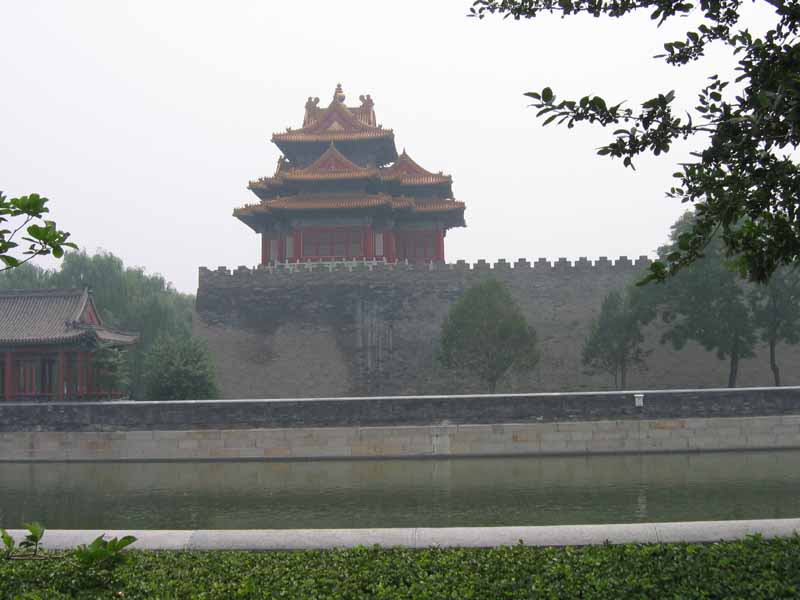
With a look at these major buildings, I've barely scratched the surface of what's inside the Forbidden City, which contains over 1-1/2 million objects in numerous galleries.
Back to Jeff's Beijing homepage
©2002-2008 Jeff Baker.us All Rights Reserved.









 The female lion plays with a baby under its left paw.
The female lion plays with a baby under its left paw.



















